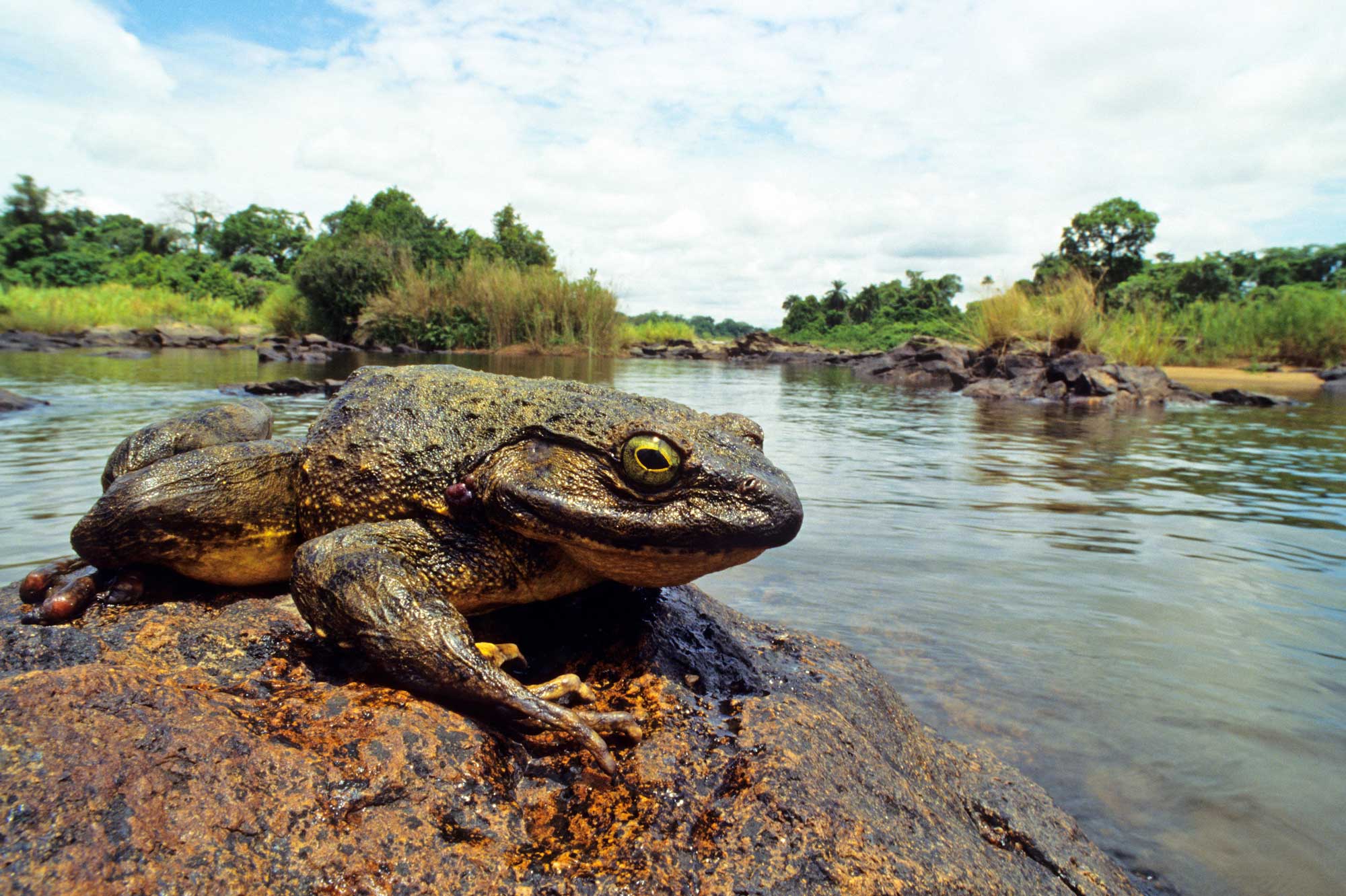Wild Relatives: The Goliath frog

Editor’s note: Our Wild Relatives story series will explore the connections between our local wildlife species and related animals from around the globe. By learning about these exotic species, we hope to foster appreciation for the remarkable creatures that live in our backyards and neighborhoods.
What's the biggest frog you've ever seen? For many people, it's the American bullfrog, a common amphibian native to the eastern United States. Bullfrogs are large frogs by just about any measure — unless they are being compared to the Goliath frog.
Goliath frogs are the largest frogs in the world, making our familiar bullfrogs look small by comparison. Goliath frogs can grow as large as some pet cats, according to the San Diego Zoo. So how do they compare to bullfrogs? Bullfrogs are typically 4 inches to 7 inches long and weigh about 1 pound, while Goliath frogs are between 6 inches and 13 inches long and can weigh in at more than 7 pounds, according to Animal Diversity Web.
Just like bullfrogs, Goliath frogs are mostly green or brownish green in color. Their underside is lighter, more yellow-green in color. Males are larger than females, which is unusual among frogs.
Because of their large size, you might think you would be able to hear a Goliath frog croaking from quite a distance. After all, you can hear a bullfrog's familiar jug-o-rum call from more than a half-mile away. However, Goliath frogs don't have vocal sacs, so they don't croak at all, Animal Diversity Web reports. For most frogs, their call is part of how they attract a mate. Instead of croaking to attract a mate, the male Goliath frogs make a whistling sound.
Like other frogs, Goliath frogs use their jumping ability to escape predators and other dangers. They can jump almost 10 feet in a single leap, the African Conservation Foundation reports. In comparison, bullfrogs can jump as far as 6 feet, but 3 feet is about average.
From tiny tadpoles to formidable frogs
Goliath frogs don't start off so big. Like all frogs, they hatch as tadpoles, and Goliath frog tadpoles are about the same size as tadpoles from other frog species, the San Diego Zoo reports. As tadpoles, they will eat only one plant, and it is found only near the rivers and waterfalls where they live.
As they get older and turn into full-fledged frogs, they turn from herbivores into carnivores. They are mostly nocturnal, hunting their prey by night. They will sit atop rocks in the water waiting for prey to approach. They have a varied diet as frogs, eating a variety of aquatic animals, such as crustaceans, fish, insects and mollusks, as well as amphibians and small mammals, Animal Diversity Web reports. They even eat other frogs.
While bullfrogs have an expansive range across the eastern United States and have been introduced in some places outside their native range, Goliath frogs are found only in the rainforests in Cameroon and Equatorial Guinea in western Africa, the San Diego Zoo reports. Their range is limited because the plant they eat as tadpoles is only found in the waterfalls and rivers in these rainforests.
Age-old wonders
Goliath frogs are one of the few amphibian species alive today that lived on Earth even before dinosaurs did. They have existed for about 250 million years, the San Diego Zoo reports.
Today, Goliath frogs are endangered, and their population is decreasing, according to the International Union for Conservation of Nature. Several factors are contributing to their population decline, including habitat destruction from deforestation in the rain forests where they live and climate change. In addition, the frogs are hunted for meat and poached to be sold into the pet trade, the African Conservation Foundation reports.
Because their habitat is being lost to farming and logging, scientists have discovered that the Goliath frogs of today weigh less than in previous generations, the San Diego Zoo reports. And because many adult frogs are hunted and poached, there are concerns that someday there may not be enough adult frogs left to reproduce.
